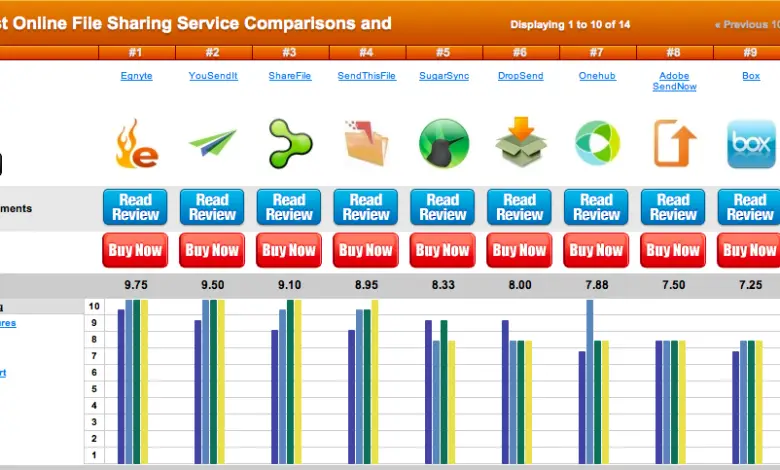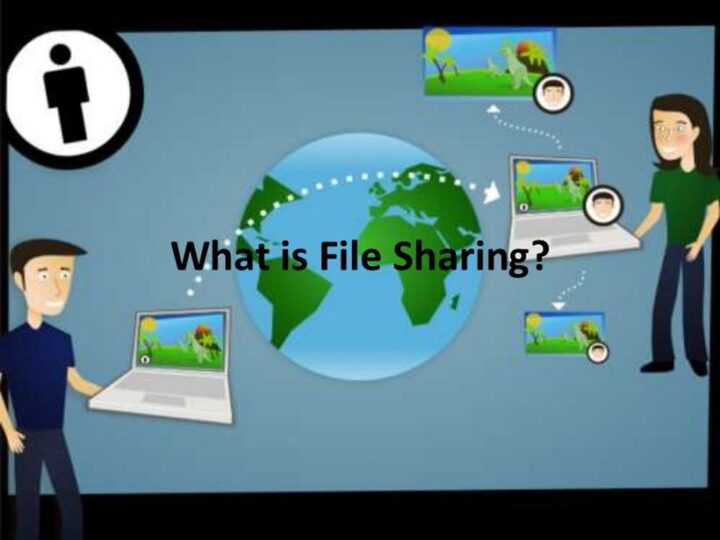8 Tips for Using Online File-Sharing Services – 2024 Guide

Sharing files, videos, photos, and other documents have become a necessity in the modern world. Back in the day, files were sent in an email or in a form of the paper copy. Even though some files are still transferred via email, due to its limitations, mostly in file size, many companies switched to sharing files through online tools. When sharing a file online there is always a question of security. Sharing confidential files through email can be risky, and many business people chose a secure online service. Before we go into the security risks, let’s see what file sharing is, how it works, and different ways of sharing.
What is file sharing?

File sharing is a private or public sharing of documents on the network where users can read or edit data, depending on the level of accessibility. There are some limitations regarding the number of files permitted to be shared as well as the number of users. Privileges regarding editing and copying files are determined by the file sharer.
Types of file sharing

- Online file-sharing services – websites like FileWhopper allow multiple users to share and download unlimited data with other users. It’s pretty simple; pay-as-you-go service will let you transfer files of any size with no need to compress them; simultaneous downloading and uploading could save you a bunch of time and if you’re worried about the privacy and security – don’t be! Zero-knowledge encryption will ensure that your files are safely stored and protected.
- Removable storage media – Everything that can be physically removed from the computer like memory stick and cards are removable storages. Files can be recorded onto the storage media and handed down to whomever you want to share it with. This can be done if there is a small number of people that need to see or edit files, but for large groups is not practical to carry media from one person to another.
- FTP – File transfer protocol or FTP is still a widely used way to share files. Data is uploaded onto a server site and the selected number of users are given a password to gain access to view or edit files. FTP sites have the option of sharing files publicly or download them using a public password.
- P2P Networks – Peer-to-Peer sharing is still very popular among users who share videos and music online. Every computer in the network acts as a server and as a client. Skype, for example, is one way of sharing files. This means that every person can directly send data to others eliminating the need for upload on one main server.
Risks of sharing files

With all the looming threats from hackers and other cybercriminals, online file sharing has its risks. If you need to share some confidential files, uploading them online can be considered as hazardous behavior. The fact is, no one is always 100% secure online, but if you have important data to share it might be better to go with some old-fashioned ways like removable storages. The risk of downloading virus-infected or copyrighted files is always present, so it’s best to know the person who uploaded it. Also, files that require you to shut off your firewall protection should be avoided online.
Still, the benefits far outweigh the risks for many. Eliminating paperwork and speeding up the process of sharing documents with everyone at once is time-saving and convenient. Regardless of the risks, companies are still choosing to upload documents online or in some other way.
The structure of sharing files

- Name shared files properly. If you skip this step, the files can easily get mixed up or lost forever. Leaving it up to your coworkers to name folders can lead to chaos since you’ll probably find stuff like “Karen’s folder” and such. Have an agreement on how the files and folders are named, namely by their function, and keep it simple so that people can remember it. Complicating things with uploading more than 5 files in one folder can leave you with confused coworkers and a lot of wasted time which beats the purpose of having file-sharing in the first place.
- Have a search option. In your file sharing platform, you should have a search option so that people can easily find documents. Clicking through every folder is a waste of time, and one simple search feature can solve that. Also, make sure that everyone is aware of the search practice.
- Limit access. Not everyone needs access all the time. Make a plan of who needs to see files and when, who needs the permission to edit or save it for offline use, and who can copy documents. All of this will put you in control of the sensitive data. Also, every additional or supporting file need to be stored on the same platform without the need of anyone saving some extra folders on the side. Be clear about this, so that everyone who needs to access the documents have the whole picture at any time.
- Security. When shared, your files should be encrypted. If you must send some delicate data via email, ensure that they are encrypted too. Security is the main concern of every business owner, and accessing files securely is paramount. This is the most important step when sharing files. If you overlook this, your clients might find you irresponsible and your competition could take advantage of your data. So, better to be safe than sorry.

As long as you act responsibly and do the research on what type of file sharing is the best solution for you, you should be safe and sound from cyberattacks or accidental information leakage. Storing and sharing files with reputable companies will ensure the security to some level. However, some cautionary steps need to be taken by you and your coworkers to build a safe network. Access control is just one way of satisfying security checks, but there are other things to consider like how long you need to keep files available or who and how can edit documents. Take everything into consideration before displaying your documents online.
For more tips about secure file sharing, visit https://www.globalscape.com/solutions/secure-file-sharing.
